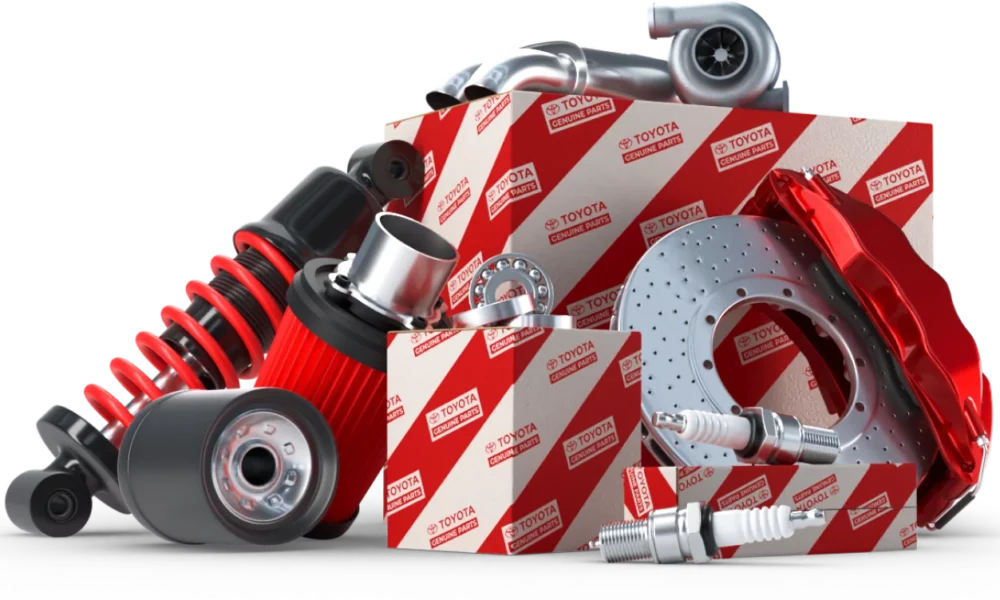A Step-by-Step Guide to Ordering Toyota Parts Online

Ordering Toyota parts used to mean making a trip to the dealership, flipping through dense parts catalogs, and hoping your local parts counter had what you needed in stock. Things have changed. Whether you are maintaining a 4Runner, restoring a classic Supra, or just replacing a headlamp on your Camry, you can now get genuine Toyota parts delivered to your door, often faster and cheaper than you’d think.
But before you jump into your online order, there’s a method to doing it right. From finding the correct part number to understanding shipping timelines and return policies, here’s how to handle the process like someone who’s done it a hundred times.
Start with the Exact Part Number
This is the step that trips up most people. Getting the right part number isn’t just helpful, it is essential. Toyota uses a very specific system to catalog parts. These numbers are not always intuitive, and a single digit off can mean you’re ordering a passenger-side mirror when you meant to get the driver-side. This gives a vehicle-specific list of parts that fit your car exactly.
Most Toyota parts websites offer VIN lookup tools. Use them. It’s worth the extra minute to ensure accuracy. You have a few reliable options to find the correct number:
- Check your owner’s manual or vehicle service manual.
- Use an online Toyota parts catalog that lets you drill down by year, model, and trim.
- Look up the VIN (Vehicle Identification Number) and enter it on reputable parts websites.
Choose the Right Online Parts Dealer
Not all online Toyota parts retailers are created equal. There are OEM-specific Toyota dealers parts online that ship straight from Toyota warehouses, and then there are third-party sellers offering aftermarket options. Stick with trusted platforms that specialize in genuine Toyota parts. Look for the following:
- A wide catalog that lets you search by VIN.
- OEM certification or confirmation that the part is genuine.
- Transparent return and shipping policies.
- Reasonable shipping fees, especially for large items like body panels or suspension parts
If the price seems too low to be real, it usually is. Some resellers advertise “Toyota parts” but send aftermarket copies instead. Always confirm that the part is labeled OEM and includes a Toyota part number.
Once you’ve nailed down the exact part and verified that the seller deals in genuine Toyota components, it’s time to place your order. Here’s what to keep in mind:
- Double-check compatibility. Even with a confirmed part number, scan the product description and fitment notes. Some parts vary by production date within the same model year.
- Pay attention to quantity. Ordering bushings or clips? Some parts come individually, others in sets.
- Check shipping options. Ground shipping may be free, but for time-sensitive repairs, expedited options might be worth the extra cost.
Before hitting that final “Place Order” button, review your cart carefully. Once an order is submitted, it’s often processed fast and may be difficult to cancel or change without fees.
Shipping Timelines
Most genuine Toyota parts ship from centralized warehouses. In-stock items typically leave within 24 to 48 hours. If a part is marked as backordered, you might be waiting anywhere from a few days to a few weeks.
Here’s how it usually breaks down. Standard shipping is 3 to 7 business days depending on location. Expedited shipping is 1 to 3 days, usually with an added fee. Freight shipping is for large items like bumpers or radiators that may require special freight delivery. Pay attention to the shipping method, especially if you’re ordering body parts or engine components. Some items can’t be shipped to residential addresses due to size or weight.
Tracking Your Order
Once your order ships, you will receive a tracking number by email. This lets you monitor where the part is and when it’s likely to arrive. Good retailers provide shipment updates automatically. If you don’t get one, log into your account or reach out directly.
If you are coordinating with a repair shop or scheduling installation time, make sure the part has physically arrived and been inspected before confirming any appointments. Mistakes can sometimes happen, and it’s better to find out early if something is missing or incorrect.
Returns and Exchanges
Even with the best preparation, occasionally a part just doesn’t fit, gets damaged in transit, or isn’t what you expected. The good news is that most reputable retailers offer returns, but there are a few conditions. Here’s what usually applies:
- Parts must be unused and in original packaging.
- Return windows typically range from 15 to 30 days.
- Electrical parts often have stricter or non-returnable policies.
- Return shipping is often at your own cost unless the seller made a mistake
When repacking the part for return, be careful. Toyota parts are packed tightly and with precision, you want to return them the same way to avoid damage in shipping. Take photos before sealing the box. It’s a small step that can save time if there would happen to be a dispute.
What About Used Parts?
For common components like mirrors, light housings, and trim pieces, certified used Toyota parts can be a smart budget move. Salvage yards and certified dismantlers list inventory online, often with photos and VIN verification.
While this article focuses on new parts, the same basic rules apply: match part numbers, use VIN tools when possible, and confirm return policies before you buy.
Tips for a Smoother Experience
There’s an art to ordering car parts online, and it gets easier with time. A few extra precautions go a long way.
- Always save your VIN in a secure document or notes app. You’ll need it constantly.
- Keep packaging until installation is complete. Sometimes you don’t know if a part fits until you’re mid-repair.
- Bookmark one or two trusted Toyota parts retailers. Consistency can help if you ever need support or price matching.
- Don’t ignore the small stuff. Things like clips, bolts, and gaskets are easy to forget, and paying for shipping twice hurts more than just adding the extras upfront.
Final Thoughts
Ordering Toyota parts online can save you time, money, and frustration, if you do it right. The key is being deliberate. Rushing the process, guessing on part numbers, or choosing the cheapest seller often leads to returns, delays, and wasted weekends.
Take the extra five minutes to verify every detail. Use your VIN. Read through the fine print. Choose sellers who clearly understand the parts they’re selling. Whether you’re a weekend DIYer or managing a fleet of work vehicles, that attention to detail pays off every time.
When done well, the whole process becomes routine, and surprisingly satisfying. No dealership lines. No waiting for someone to call you back. Just the right Toyota part, delivered to your door, ready when you are.

Source: A Step-by-Step Guide to Ordering Toyota Parts Online

